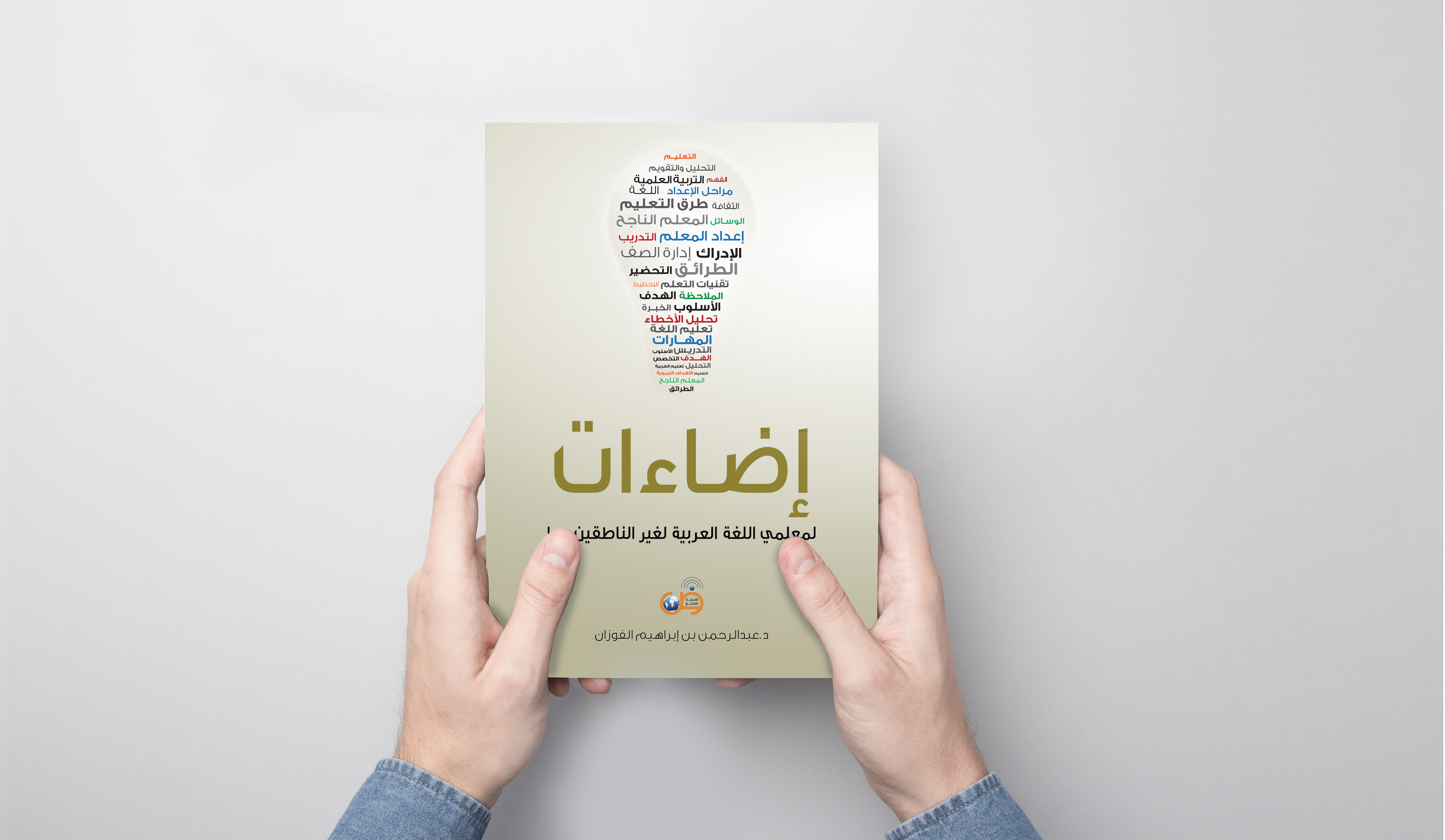The book Eda'at for Arabic language teachers for non-native speakers is a comprehensive reference for the teacher, as it contains important aspects of applied linguistics and teaching languages, especially
Arabic for non-native speakers.
This book was written with the aim of raising the professional competence of the teacher of non-Arabic native speakers, and taking into account the brevity and clarity, to be suitable for all teachers, and to
suit their level and actual needs in this field. And to be a light reference by the teacher accompanying him in his educational career.
This work is an unquestionable effort, in which its author - Dr. Abd al-Rahman bin Ibrahim Al-Fawzan - relied on his personal experience, and on what he had selected, collected and selected from in the field, and
benefited from what was written and presented by specialists and experts in this field, including the teacher training team in (Arabic for All).
This book is divided into eight chapters distributed as follows:
The First Chapter:
In it, the main methods of teacher preparation and training. It also addresses the definition of the competent teacher, the successful teacher, and the four characteristics of the competent teacher. It also explains the difference between teaching Arabic to Arabic native speakers and teaching it to others in an easy scientific form.
Chapter Two:
It deals with methods of language acquisition and learning, and how to teach linguistic elements, sounds, and vocabulary, And the structures and teaching language skills (listening - speaking - reading - writing).
Chapter Three:
It deals with an explanation of the most important trends adopted in teaching beginners. The author also addresses the issue of how to differentiate between teaching the Noble Qur’an and teaching the Arabic
language. The author also details for us everything related to language exercises, their types, the criteria for dividing them, and the way they are presented to students.
In this chapter, the author also discussed the problems of teaching the Arabic language to non-native speakers from a scientific, administrative, political, economic, and social aspect in detail, and then put the
appropriate treatment for it, and other topics.
Chapter Four:
This part of the book reviews the basics and characteristics of a good book in teaching Arabic to non-native speakers, the importance of a good book in the educational process, the characteristics of a good book and the differentiation between language culture and language culture, and many other topics.
Chapter Five:
In this chapter, the author deals in some detail with the methods of teaching foreign languages, the features and disadvantages of each method, and practical education, and then deals with language tests, specifications of a good test, and types of tests in terms of goal and method. It then deals with cross-linguistic science, error analysis, error interpretation standards, teaching aids and techniques, computer-assisted teaching, language teaching, software, and language games.
Chapter Six:
It deals with the topic of science education and in it, the writer explains the educational goals, watching, preparing lessons, micro-teaching, and implementing practical training
Chapter Seven:
In it, the writer provides important models and directions to the teacher on how to display lessons and conduct exercises.
Chapter Eight:
It contains important benefits and directions in classroom management, classroom controls, and directions for dealing with students in many situations.
The book contains a sample test consisting of 260 questions for review and for performing the self-test
Finally, we can say that this book is a comprehensive reference for the Arabic language teacher


